Search Results
Back to JTS Torah Online's Main page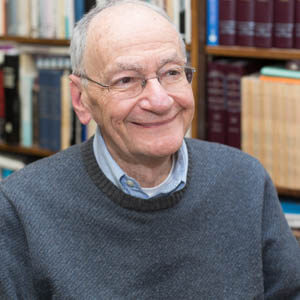
Genesis and Infertility
Nov 1, 2003 By Ismar Schorsch | Commentary | Noah
My aunt and uncle never had children. In a very real sense, my sister and I were their surrogate family. We visited them often, stayed with them in the summers and loved them dearly. In Germany, my uncle had been a textile salesman. When they came to America in 1937, he decided to work with dogs, his lifelong passion, rather than fabrics. Eventually, they acquired a kennel for dogs out in Yaphank, Long Island, and quickly endowed it with renown by dint of hard work. They boarded, bred and even showed dogs.
Read More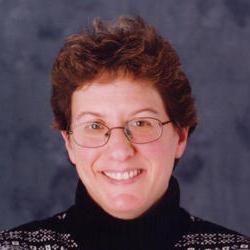
Chaos and Creation
Nov 1, 2003 By Melissa Crespy | Commentary | Noah
Striking me, on this year’s reading of Parashat Noah, were the two following verses: “God caused a wind to blow across the earth, and the waters subsided” (Genesis 8:1), and “But the dove could not find a resting place for its foot (v’lo matz’ah ha-yonah manoah), and returned to him to the ark, for there was water over all the earth” (Genesis 8:9).
Read More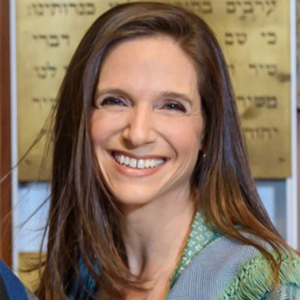
In God’s Image
Oct 25, 2003 By Rachel Ain | Commentary | Bereishit
In Parashat Bereishit , we are told that “God created man in His image, in the image of God He created him; male and female He created them” (Gen 1:27).
Read More
The Garments of Adam and Eve
Oct 25, 2003 By Ismar Schorsch | Commentary | Bereishit
When Franz Rosenzweig published his unconventional German translation of ninety-two Hebrew poems by Judah Halevi, he headed his afterword self-effacingly with a plea from a German translator of The Iliad: “Oh dear reader, learn Greek and throw my translation into the fire.”
Read More
The Gift of Shabbat
Oct 25, 2003 By Rachel Ain | Commentary | Bereishit
In Parashat Bereishit, we are told that “God created man in His image, in the image of God He created him; male and female He created them” (Gen 1:27).
Read More
Taking Refuge in Sacred Texts
Oct 19, 2003 By Ismar Schorsch | Commentary | Simhat Torah
Most books that we read we never open again. A classic draws us to revisit it on occasion. Not so the Torah. As we finish reading it yearly in our synagogues, we immediately begin it afresh, without interruption.
Read More
Repairing Jonah’s Sukkah
Oct 11, 2003 By Matthew Berkowitz | Commentary | Sukkot | Yom Kippur
This coming Friday evening we herald in the first festival of the Jewish year, Sukkot. Between Motzei Yom Kippur (the evening concluding Yom Kippur) and Friday, sukkot (temporary booths) are built all around the Jewish world. It is an especially memorable event in Israel where cities and villages alike are transformed by the festival greenery. Special markets spring up across the country peddling the four species that are brought together as we celebrate the absolute joy of the holiday. The fragrance of the etrog embraces all as we enter the sukkah, declaring our faith in God’s protection. That said, the sukkah is not only at the essence of Sukkot; the sukkah, in all its beauty and symbolism provides a powerful bridge between the most sacred day of the year, Yom Kippur, and the harvest festival of Sukkot.
Read More
Connecting Pesah with Sukkot
Oct 10, 2003 By Ismar Schorsch | Commentary | Pesah | Sukkot
The parallelism between Sukkot and Pesach is striking. The Torah scripts them to start on the fifteenth day of the month when the moon is full and to last for seven days. Originally agricultural festivals, their historical overlay links them both to the redemption from Egypt. In each case, the name of the festival derives from the ritual which is its most prominent feature. In tandem, the two anchor the changing of the seasons in the fall and the spring (the two times of year when the seasons actually change in the Middle East) in the biblical calendar. They are the axis on which that calendar turns.
Read More
Crafting a Moral Compass
Oct 6, 2003 By Ismar Schorsch | Commentary | Yom Kippur
If the liturgy of Yom Kippur is a symphony in five movements, then the leitmotif that unites them is the public confession. From Minhah prior to Kol Nedrei till the Ne’ilah service at the end of Yom Kippur, every Amidah (silent devotion) has at least one confessional prayer. Indeed, five of the six (excluding Ne’ilah) have two: the short version beginning with Ashamnu (we have acted with malice), which lists twenty-four generic types of reprehensible behavior and the long version of Al Het Shehatanu (for the sin that we have committed.), which doubles the number to forty-four generic types. Yom Kippur is utterly distinctive in the annual cycle of Jewish holy days for many reasons; not the least of which is that it is the only time that Jews confess publicly. Far more private is the traditional deathbed prayer of confession whose poignancy is underlined by the fact that it is cast in the first person singular, rather than in the plural like Yom Kippur.
Read More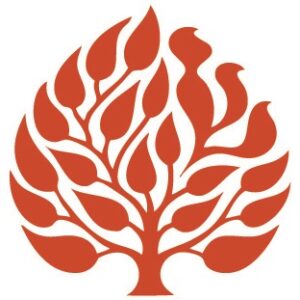
Dialogue with the Past
Oct 4, 2003 By Lewis Warshauer | Commentary | Ha'azinu | Shabbat Shuvah
Among all the societies where Jews have lived, America has been least conducive to maintaining a sense of the past. A building from thirty years ago can be a historic landmark; kitchenware from forty years ago qualifies as antique. Objects from the past are allowed to have a fashionable revival but ideas, stories, and concepts from the past are considered outmoded.

A Universal New Year
Sep 27, 2003 By Ismar Schorsch | Commentary | Rosh Hashanah
Living in a universe at least thirteen billion years old, we view with mild disclaim an ancient rabbinic dispute over the exact month in which God created it. Not long after the destruction of the Temple by the Romans, two of Rabban Yochanan ben Zakkai’s renowned disciples expressed opposing views. Rabbi Eliezer ben Hyrcanus insisted that God had created the world in the month of Tishrei, while Rabbi Yekoshua ben Hananyah contended that the event occurred in Nisan. Both rejected the Geek view that the cosmos might be eternal and uncreated. For the Torah and rabbinic Judaism, the ultimate reassurance of God’s existence is the miracle of creation, the mother of all miracles (BT Rosh Hashanah 106-11a).
Read More
Remembrance, Childbirth, and Renewal
Sep 27, 2003 By Melissa Crespy | Commentary | Rosh Hashanah
Remembrance. Childbirth. Renewed hopes and dreams.
Read More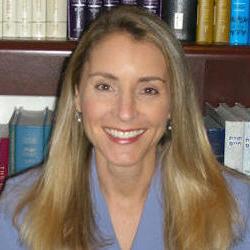
Torah and Teshuvah
Sep 20, 2003 By Lauren Eichler Berkun | Commentary | Nitzavim | Vayeilekh | Rosh Hashanah | Yom Kippur
The beautiful and famous words of this week’s parashah have always touched my heart. This year, I read the following passage with new lenses, as I immerse myself in the month of Elul and the spiritual preparations for teshuvah. The Torah teaches:
Read More“Surely, this Instruction (Ha-Mitzvah Ha-Zot) which I enjoin upon you this day is not too baffling for you, nor is it beyond reach. It is not in the heavens, that you should say, ‘Who among us can go up to the heavens and get it for us and impart it to us, that we may observe it?’ Neither is it beyond the sea, that you should say, ‘Who among us can cross the sea and get it for us and impart it to us, that we may observe it?’ No, the thing is very close to you, in your mouth and in your heart, to observe it” (Deut. 30:11-14).

Moments of Transition
Sep 13, 2003 By Matthew Berkowitz | Commentary | Ki Tavo
Liminal moments are often marked by meaningful ceremonies. A baby is welcomed into the covenant of the Jewish people through a simhat bat or brit milah ceremony. Children celebrate becoming a bar or bat mitzvah by being called to the Torah. Marriage is marked by a ritual of kiddushin (sanctification) under the huppah. So too are such moments ritualized in the annual Jewish calendar. One need only think of the coming High Holidays — Rosh Hashanah and Yom Kippur — to be reminded of the special rituals that transition us into the new year (the sounding of the shofar, tashlikh, and the ascetic laws in observance of Yom Kippur).
Read More
Hebrew’s Answer to Life’s Deepest Riddle
Sep 13, 2003 By Ismar Schorsch | Commentary | Ki Tavo
The Bible’s most famous riddle was the brainchild of Samson. “Out of the eater came something to eat; out of the strong came something sweet” (Judges 14:14). Samson posed it on the occasion of his seven-day wedding feast to thirty young Philistine men who came to celebrate his marriage to one of their own. On the last day, the young men responded gleefully: “What is sweeter than honey, and what is stronger than a lion?” Dismayed, Samson accused them of coercing his bride: “Had you not plowed with my heifer, you would not have guessed my riddle.” And indeed, threatened by them with savage revenge, she had wheedled the answer out of Samson, only to betray him, exactly as Delilah would do later in his life.
Read More
The Courage to Get Married
Sep 6, 2003 By Ismar Schorsch | Commentary | Ki Tetzei
It takes courage to get married. Divorce statistics attest to the high risk of failure. Yet ours is not the first generation to appreciate the demanding complexity of matrimony. A charming rabbinic tale suggests that the rabbis already deemed every successful marriage a miracle, the blessed product of divine intervention.
Read More
Before the Geneva Conventions
Sep 6, 2003 By Lewis Warshauer | Commentary | Ki Tetzei
Yitzhak Rabin, in his acceptance speech on the occasion of receiving the Nobel Prize for Peace in 1994, said:
Read MoreAt an age when most youngsters are struggling to unravel the secrets of mathematics and the mysteries of the Bible; at an age when first love blooms; at the tender age of sixteen, I was handed a rifle so that I could defend myself. That was not my dream. I wanted to be a water engineer. I studied in an agricultural school and I thought being a water engineer was an important profession in the parched Middle East. I still think so today. However, I was compelled to resort to the gun.

Leaving Egypt
Aug 30, 2003 By Matthew Berkowitz | Commentary | Shofetim
Several weeks ago, a book review in the New York Times caught my attention. Janet Maslin, reviewing The Known World by Edward Jones wrote: “Mr. Jones explores the unsettling, contradiction-prone world of a Virginia slaveholder who happens to be black.” (NYT, August 14, 2003).
Read More
Judging Ourselves
Aug 30, 2003 By Lauren Eichler Berkun | Commentary | Shofetim | Rosh Hashanah
As we enter the month of Elul, the period of spiritual preparation for the High Holidays, it is fitting that we read Parashat Shofetim. The word Shofetim means “judges.” This Torah portion is dedicated to the establishment of a judicial system in the Holy Land. In our communities today, we are counting down to the “Day of Judgment,” Yom HaDin.
Read More
One Place, Many Prayers
Aug 23, 2003 By Matthew Berkowitz | Commentary | Re'eh
Deuteronomy as a whole is focused on what scholars refer to as ‘the centralization of the sacrificial cult.’ Until this historical point, it would appear that the Israelites offered sacrifices at local altars called ‘bamot.’ With the Deuteronomic legislation however, such local devotional sites are obliterated. Even if Israelites in outlying areas could not be present at the Temple services in Jerusalem, worship at this focal point was supposed to represent and include them. What are the ramifications of such legislation and how can we place this teaching in a modern context?
Read MoreSUBSCRIBE TO TORAH FROM JTS
Our regular commentaries and videos are a great way to stay intellectually and spiritually engaged with Jewish thought and wisdom.




